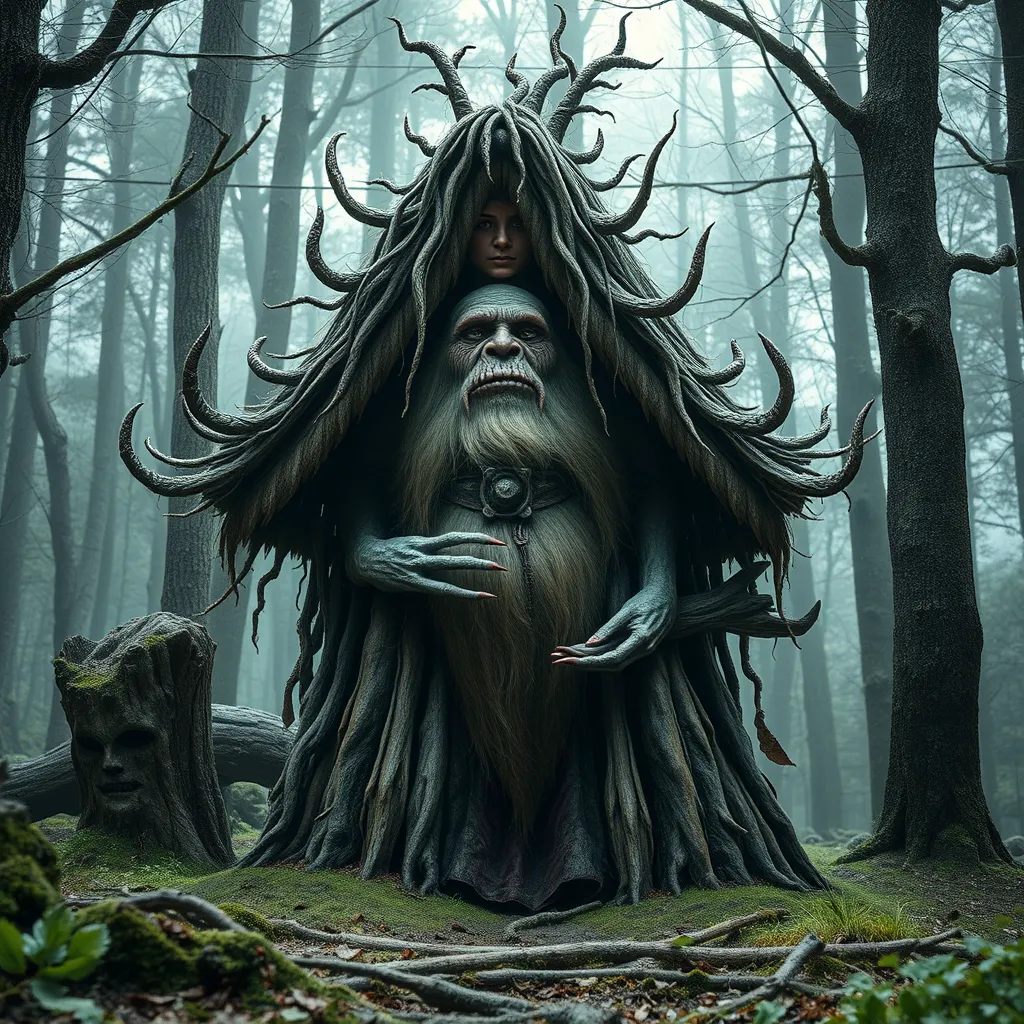The Troll of the Andes: Tales of the Mountain Giants of South America
I. Introduction
The Andes Mountains, stretching over 7,000 kilometers along the western edge of South America, are not just a geographical marvel but also a rich tapestry of myths and legends. Among these tales, the figure of the mountain giant or troll holds a significant place in the folklore of various indigenous cultures. These beings are often depicted as powerful guardians of the mountains, embodying both the beauty and the dangers of the Andean landscape.
This article aims to explore the fascinating legends surrounding the trolls of the Andes, delving into their cultural significance and the ways in which they reflect the relationship between the people and their mountainous environment.
II. Historical Context of Andes Mythology
Indigenous cultures, such as the Quechua and Aymara, have long-standing connections with the Andes, often viewing the mountains as sacred entities. Their mythology is filled with stories that celebrate the mountains as both providers and protectors. The concept of mountain giants or trolls has evolved through centuries, influenced by both indigenous beliefs and the narratives introduced by European settlers.
A. Indigenous cultures and their connection to the mountains
For the indigenous peoples of the Andes, the mountains are not merely physical landmarks but are imbued with spiritual significance. They are seen as living beings, often personified in stories that explain natural phenomena such as earthquakes, avalanches, and changes in weather.
B. Overview of key myths and legends involving mountain giants
Key myths feature mountain giants that guard treasures hidden within the mountains or protect sacred sites. These giants often require offerings or respectful behavior from those who venture into their territory, reinforcing a reciprocal relationship with nature.
C. Influence of European settlers on these tales
With the arrival of European settlers, these indigenous tales began to blend with European folklore, creating new variations of the troll legends. The trolls were sometimes depicted as mischievous or malevolent beings, reflecting the settlers’ fears and misunderstandings of the natural world.
III. The Troll of the Andes: Description and Characteristics
Descriptions of the trolls of the Andes vary widely depending on the region and the cultural lens through which they are viewed. However, several common attributes can be identified across different myths.
A. Physical attributes and traits of the mountain troll
- Typically described as large and towering figures, often over 10 feet tall.
- Skin is said to be rough and stone-like, blending with the rocky landscapes of the Andes.
- Possess long limbs and sharp claws, symbolizing their connection to nature’s raw power.
B. Variations in descriptions across different cultures
In some cultures, trolls are seen as protective spirits, while in others, they are portrayed as vengeful beings who punish those who disrespect the mountains. These variations often reflect local customs and environmental conditions.
C. Symbolism behind the troll figure
The troll often symbolizes the untamed forces of nature, representing both its beauty and its peril. They serve as reminders of the respect that nature demands and the consequences of human actions on the environment.
IV. Notable Legends and Stories
Across the Andes, numerous legends recount encounters with trolls, each unique yet sharing common themes.
A. Famous tales of encounters with the troll
One popular legend tells of a shepherd who, while tending to his flock, encountered a troll guarding a hidden valley filled with lush pastures. The troll, impressed by the shepherd’s respect for nature, allowed him to pass but warned him to never return without an offering.
B. Regional variations in the stories across South America
In Chile, the troll is often depicted as a trickster who challenges travelers, whereas in Peru, the tales focus on their role as protectors of sacred sites. This diversity illustrates the rich cultural heritage of the region.
C. Analysis of common themes in these legends
Common themes include respect for nature, the consequences of greed, and the balance between humanity and the environment. These narratives reinforce the need for harmony with the natural world.
V. The Troll’s Role in Cultural Practices
The legends of trolls have permeated various cultural practices in the Andes, influencing rituals, art, and local customs.
A. Rituals and festivals associated with mountain giants
Many communities hold festivals in honor of the trolls, where offerings are made to ensure safe passage through the mountains. These rituals often involve music, dance, and the sharing of traditional food, creating a sense of community and shared identity.
B. The troll in art and literature
The figure of the troll appears in local art, often depicted in traditional crafts and textiles. Literature, both oral and written, has also played a role in keeping these stories alive, with contemporary authors drawing inspiration from ancient myths.
C. Impact on local customs and beliefs
The presence of trolls in local folklore has reinforced customs that promote environmental stewardship and respect for the mountains, shaping the beliefs and behaviors of communities.
VI. Modern Interpretations and Representations
In the contemporary world, the trolls of the Andes have found their place in pop culture and media, reflecting a renewed interest in folklore.
A. The troll in contemporary media and pop culture
Modern films, books, and video games have incorporated the troll figure, often reimagining them in fantastical narratives. These representations can either honor the original myths or create entirely new interpretations.
B. How modern society views these ancient legends
While some may view these tales as mere folklore, others recognize their importance in understanding the cultural heritage of the Andes. They serve as a bridge connecting past beliefs with contemporary environmental concerns.
C. Preservation of folklore in the digital age
With the rise of digital platforms, there has been a concerted effort to preserve and share these ancient stories, ensuring that they remain relevant for future generations.
VII. The Troll as a Symbol of Nature and Environment
The troll figure transcends mere mythology, serving as a powerful symbol of nature’s force and the environmental challenges faced today.
A. The troll as a metaphor for nature’s power
Trolls embody the awe-inspiring and sometimes terrifying aspects of nature. Their stories remind us of nature’s unpredictability and the need for respect and caution.
B. Environmental concerns in the Andes and their connection to folklore
As environmental issues such as deforestation and climate change threaten the Andes, the myths of trolls can serve as a rallying point for conservation efforts, emphasizing the importance of protecting these sacred landscapes.
C. The role of myths in promoting conservation efforts
Folklore can play a crucial role in inspiring action, as stories of trolls can motivate communities to engage in sustainable practices and advocate for the preservation of their natural heritage.
VIII. Conclusion
The legend of the troll in Andes mythology is a powerful testament to the enduring relationship between culture and nature. These mountain giants are more than just mythical creatures; they embody the values, beliefs, and environmental consciousness of the Andes’ indigenous peoples.
As we reflect on the significance of these tales, it becomes clear that the legacy of mountain giants continues to resonate in contemporary culture. By preserving and sharing these stories, we not only honor our past but also ensure that future generations understand the importance of living in harmony with the environment.
In conclusion, the trolls of the Andes are vital components of cultural identity, environmental awareness, and the rich folklore of South America. Their stories remind us of the power of nature and the need to respect and protect the world around us.



